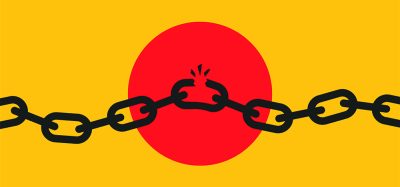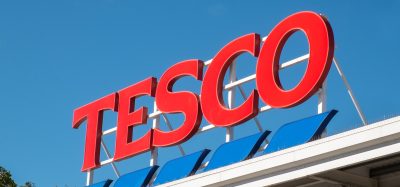The ISO 22000 series – global standards for safe food supply chains
- Like
- Digg
- Del
- Tumblr
- VKontakte
- Buffer
- Love This
- Odnoklassniki
- Meneame
- Blogger
- Amazon
- Yahoo Mail
- Gmail
- AOL
- Newsvine
- HackerNews
- Evernote
- MySpace
- Mail.ru
- Viadeo
- Line
- Comments
- Yummly
- SMS
- Viber
- Telegram
- Subscribe
- Skype
- Facebook Messenger
- Kakao
- LiveJournal
- Yammer
- Edgar
- Fintel
- Mix
- Instapaper
- Copy Link
Posted: 1 June 2009 | Jacob Færgemand, Sales and Technical Director Food, Bureau Veritas Certification | No comments yet
The launch in September 2005 of the ISO 22000 series, developed by ISO technical committee ISO/TC 34, Food products, signalled the arrival of a truly global option for ensuring safe food supply chains. This article gives a technical overview of the different standards in the series and how they can be put to use.
The launch in September 2005 of the ISO 22000 series, developed by ISO technical committee ISO/TC 34, Food products, signalled the arrival of a truly global option for ensuring safe food supply chains. This article gives a technical overview of the different standards in the series and how they can be put to use.
The launch in September 2005 of the ISO 22000 series, developed by ISO technical committee ISO/TC 34, Food products, signalled the arrival of a truly global option for ensuring safe food supply chains. This article gives a technical overview of the different standards in the series and how they can be put to use.
The safety of feed and food at any point in the chain from producer to consumer is of worldwide concern. Food safety hazards may be introduced at any stage, therefore adequate control throughout the production chain is essential.
Examples of outbreaks of highly contagious diseases in livestock, such as foot and mouth disease and of micro-organisms like salmonella and listeria have highlighted the risks of food contamination.
Unsafe food is a risk for all – consumers can become seriously ill and the industry can face costly corrective actions. The underlying belief that harmonisation is possible across today’s global industry is not enough, nor are sound food safety directives on their own.
Communication and raising awareness of potential hazards throughout the entire food chain – and therefore not restricted to one company or department – is crucial. Food safety is a joint responsibility for all of the participating parties.
ISO 22000:2005 food safety management systems – requirements for any organisation in the food chain, aims to ensure that there are no weak links in the food supply chain. Since its publication in September 2005, the standard has been well received by the food industry and is clearly becoming a global standard to be reckoned with.
Tailor-made approach
ISO 22000 has been designed with flexibility to enable a tailor-made approach to food safety for all segments of the food chain. It does not take a ‘one size fits all approach’ since the standards and procedures required for high risk areas in one food sector may not be appropriate in another. For this reason, unlike other schemes, the standard does not provide a checklist methodology.
If a company seeks certification to ISO 22000, it needs to follow local and export market laws, as well as implementing customer’s requests. ISO 22000 requires that industry targets each specific type of food product adequately according to its needs.
Effectiveness through communication
Through the development of one system that crosses all food sector branches and national borders, food safety is strengthened by the harmonisation of working procedures. This is one of the fundamental rationales behind the ISO 22000 standard.
If everyone uses the same methods and language, the systems effectiveness improves, increasing food safety, reducing the risk of critical errors and misunderstandings and maximising the use of resources.
ISO 22000 can be applied to all types of organisations within the food chain, ranging from feed producers, primary producers, food manufacturers, transport and storage operators and subcontractors to retail and food service outlets – together with inter-related organisations such as producers of equipment, packaging material, cleaning agents, additives and ingredients.
Making it safe to eat
ISO 22000 combines generally recognised key elements to ensure food safety along the food chain.
Interactive communication
Clear communication along the food chain is essential to ensure that all relevant food safety hazards are identified and adequately controlled at each step. This implies communication of an organisation’s needs to the other organisations both upstream and downstream in the food chain. Communication with customers and suppliers based on the information generated through systematic hazard analysis also assist in meeting customer and supplier’s requirements in terms of feasibility, need and impact on the end product.
System management
The most effective food safety systems are designed, operated and updated within the framework of a structured management system and incorporated into the overall management activities of the organisation. This provides maximum benefit for the organisation and interested parties. ISO 22000 is aligned with the requirements of ISO 9001:2000 in order to enhance the compatibility of the two standards and to ease their integrated implementation.
Hazard control
ISO 22000 combines the Hazard Analysis and Critical Control Point (HACCP) principles and application steps developed by the Codex Alimentarius, with prerequisite programmes. It uses a hazard analysis to determine the strategy for hazard control.
Advantages for the food industry
Organisations implementing the standard benefit from:
- organised and targeted communication among trade partners
- optimisation of resources (internally and along the food chain)
- improved documentation
- better planning, less post-process verification
- more efficient and dynamic control of food safety hazards
- all control measures subjected to hazard analysis
- systematic management of prerequisite programmes
- wide application because it is focused on end results
- valid basis for taking decisions
- increased due diligence
- control focused on what is necessary
- saving resources by reducing overlapping system audits
Food you can trust
Other stakeholders benefit from confidence that the organisations implementing ISO 22000 have the ability to identify and control food safety hazards.
The standard adds value because it:
- is an auditable standard with clear requirements
- is internationally accepted
- is a publicly available scheme, not a proprietary one, that can be used by all
- integrates and harmonises various existing national and industry-based certification schemes
- addresses a desire for harmonisation from the food processing industries concerning food safety
- is aligned with ISO 9001:2000, Quality management systems – Requirements, and ISO 14001:2004, Environmental management systems – Requirements with guidance for use, and the Occupation Health and Safety Assessment Series (OHSAS) and can also incorporate retailers’ standards
- contributes to a better understanding and further development of HACCP
A complete menu of standards
ISO 22000 is supported by a complete set of standards that reinforce its implementation.
Audit and certification
To increase the acceptance of ISO 22000 and ensure that accredited certification programmes are implemented in a professional and trustworthy manner, the technical specification: ISO/TS 22003, Food safety management systems – Requirements for bodies providing audit and certification of food safety management systems, was published in 2007.
It provides the necessary information and confidence on how the certification of an organisation’s food safety management system has been conducted. This technical specification offers harmonised guidance for the accreditation of certification bodies and defines the applicable rules for the audit of a food safety management system compliant with ISO 22000.
Applying food safety
ISO/TS 22004:2205, food safety management systems – guidance on the application of ISO 22000:2005, was published in 2005. It provides guidelines on implementing ISO 22000, with particular emphasis on good examples.
In 2007, ISO and the International Trade Centre collaborated to produce the book ISO 22000 Food Safety Management Systems – An easy-to-use checklist for small business – Are you ready? It explains how small and medium-sized enterprises can use and implement ISO 22000.
Tracing the feed and food chain
A new standard was published in June 2007 on traceability: ISO 22005:2007, traceability in the feed and food chain – general principles and basic requirements for system design and implementation. It is a useful amplification of the reference in ISO 22000 to traceability as an important component of food safety.
ISO 22005 is intended for organisations operating or cooperating at any point in the feed and food chain. It does not contain any reference to certification nor is it combined with other standards. Instead, the possibility of certification is left to the user’s discretion. However, the standard requires that organisations carry out monitoring, internal audits and reviews to assess the effectiveness of the system.
Other standards in the ISO 2000 family are being developed. They include a project for quality management for farmers and a standard dealing with radiation of foods. More information can be given by contacting the ISO/TC 34 secretariat: [email protected].
Benefits of building food safety
Food producers in all parts of the food chain around the world have adopted ISO 22000 as a new global food safety standard. Still, many small and medium-sized companies are waiting for the position of the three main market drivers: multinational food companies, authorities and retailers.
Some of the largest multinational food companies have been very positive about implementing the standard for themselves and their suppliers. Authorities in some countries plan to let certified companies benefit from less frequent controls, and perhaps consider an outsourcing of public control. The frontrunners in the work are authorities in Denmark and France. Retailers in Belgium and Denmark are already certified with ISO 22000, but greater communication on the benefits for retailers is still needed.
Driving forces for the future
It is important to create a common understanding of the benefits of building a food safety management system based on ISO 22000, for both manufacturing companies and retailers. This is being addressed by ISO/TC 34, Food products and food sector organisations for retailers, food producing companies and international certification bodies, among whom a bridging process has been initiated.
The driving forces for the future development of ISO 22000’s implementation are, to a large extent, retailers, important food producers and national authorities. Future dialogue among them is needed. Authorities have to define food safety objectives for hazards like salmonella, coli bacteria and campylobacter and companies need to incorporate control measures that ensure these acceptable levels are met.
Another challenge for the food industry is to manoeuvre between authorities, clients and internal company demands on how to make safe foods. ISO 22000 provides guidance on this never-ending question and now the ISO 22000 series provides a set of tools for use by all interested parties. These include consultants, certification bodies, accreditation bodies, public authorities and all players in the food supply chain, from farmer to retailer.
Food safety hazards may be introduced at any stage, therefore adequate control throughout the production chain is essential.
Unsafe food is a risk for all
- ISO 22000 can be applied to all types of organisation within the food chain
- ISO 22000 contributes to a better understanding of HACCP
- Other standards in the ISO 2000 family are being developed
The ultimate objective is to put safe food on the tables of the consumer – you and me. Bon appétit!






